Shellfish harvesting in Washington is a beloved tradition, from plucking plump oysters from Willapa Bay to digging up razor clams burrowed into Pacific Coast beaches. The state’s many annual seafood festivals and curated shellfish trail are great introductions to the state’s shellfish bounty. Grab your rubber boots, clamming shovel, shucking knife, or crab pots and get ready to experience Washington’s seafood bounty.
The Washington Department of Fish and Wildlife (WDFW) has a handy Find a Beach tool, which includes information on harvest seasons and dig schedules, as well as a harvesting-specific tide chart. The Department of Health also updates a shellfish safety interactive map. Before heading out, be sure to check out these handy resources and familiarize yourself with shellfish harvesting seasons and licensing requirements below.
Washington Shellfish: Where and When to Harvest
Oysters
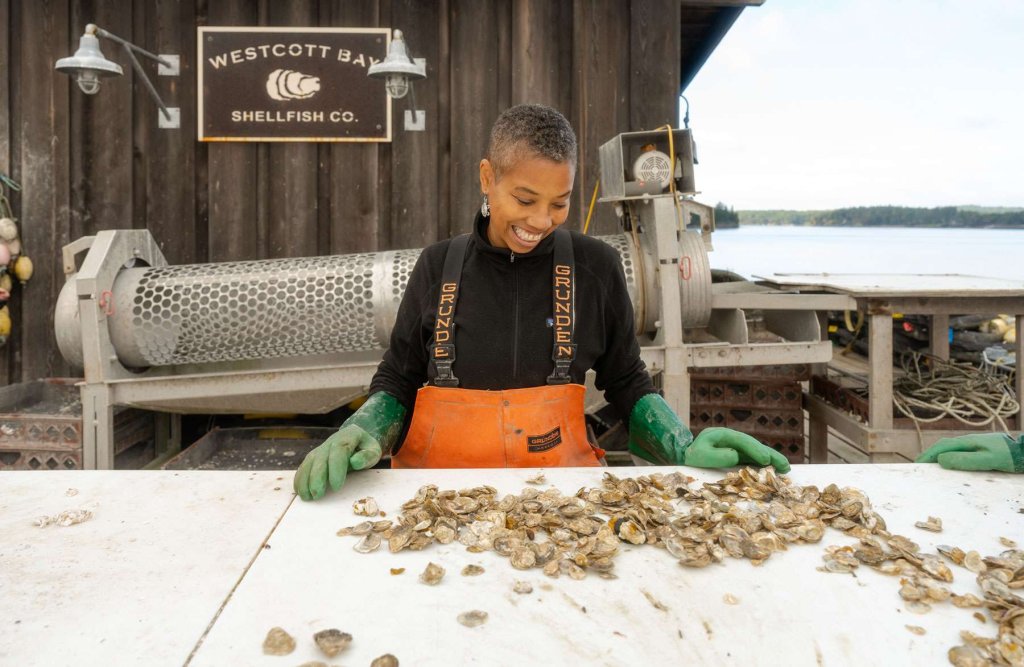
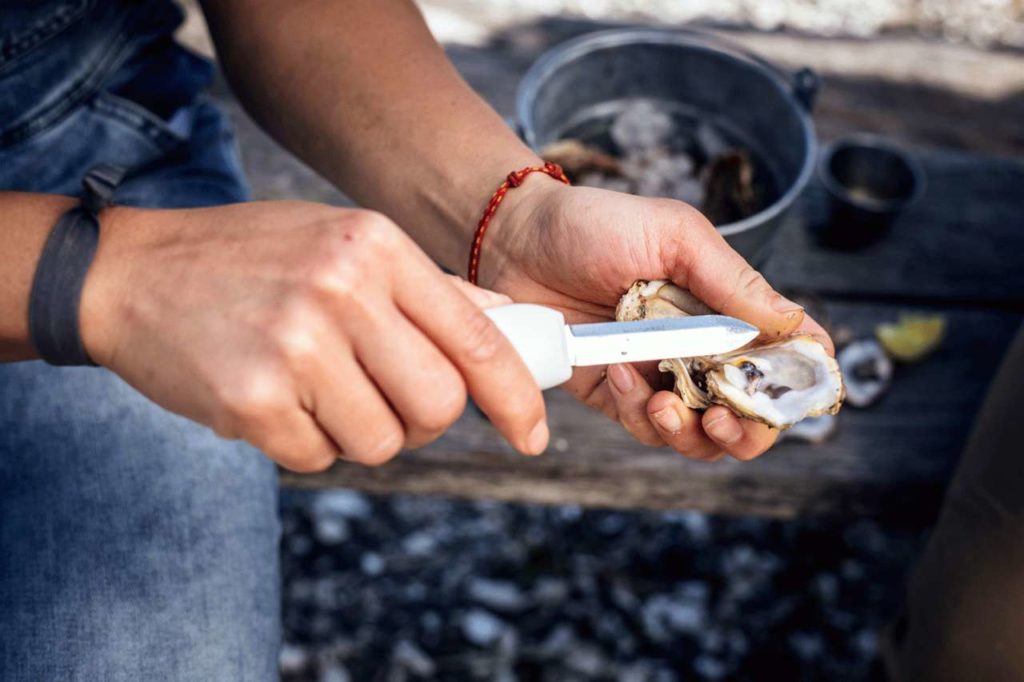
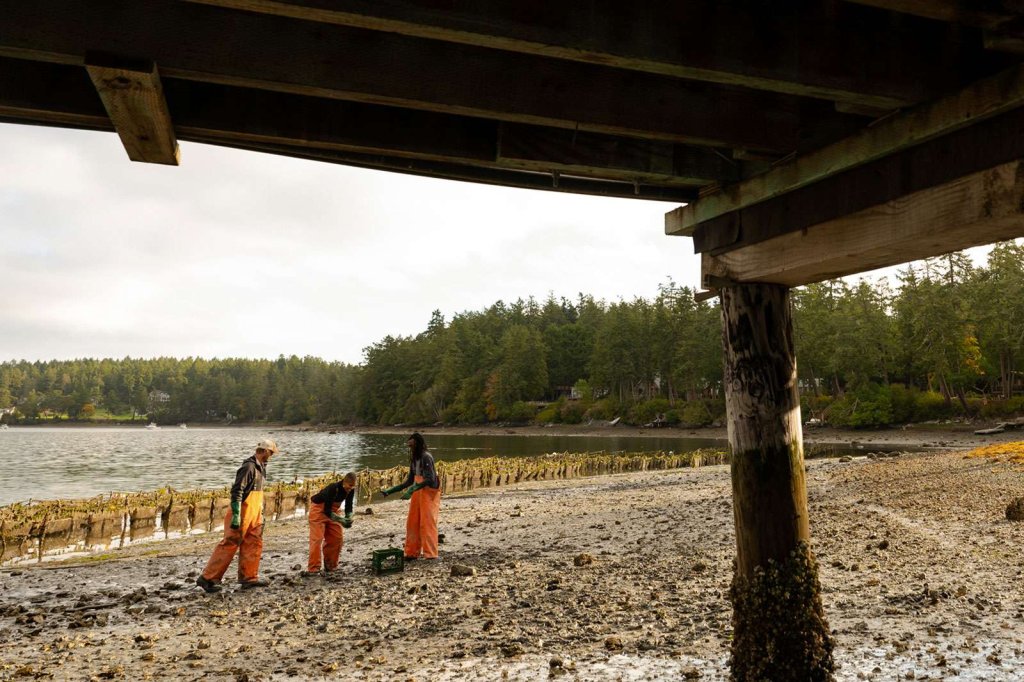
There’s nothing quite like prying open an oyster and slurping the briny bivalve while sitting on a gorgeous Washington beach. In Willapa Bay on the southern coast, harvest oysters year-round in the Nahcotta Tidelands. In August, celebrate Willapa Bay oysters—which account for 25% of national consumption—at the Jazz and Oysters festival on the Long Beach Peninsula. To learn about oyster farming, take a tour at Oysterville Sea Farms.
Hood Canal is another prime spot for oyster harvesting. At Dosewallips State Park, the marked public tidelands are known as excellent year-round spots to find oysters. Just north, embark from Yelvik’s Beach with Hood Canal Adventures on their marine biologist-led Oyster Shucking and Kayak Tour. Consider staying the night in Lilliwaup at Olympic Oyster Co.’s waterfront cabins or glamping tents. Nearby, you can slurp fresh oysters at Hama Hama Oyster Saloon on the tide flats or check out oyster classes.
On San Juan Island, Westcott Bay Shellfish Co. is known for oysters, as well as mussels and clams. While you can enjoy fresh shellfish at their restaurant or farm store, Westcott Bay also offers Happy Hour Farm Tours where visitors can walk the dock, learn about farming practices, and shuck their own oysters.
For a less hands-on approach, head to Shelton’s annual OysterFest in October. The event draws locals and visitors alike for shellfish-focused festivities, including its much-anticipated oyster shucking competition.
Seasons, Licenses, and Regulations:
- While March and April are considered some of the best months, oyster harvesting can be done year-round.
- During cooler months (October – April), oysters can generally be eaten raw. During the summer, warm water increases the risk of bacterial contamination, so oysters should be cooked.
- Check beach status at WDFW with DOH before heading out.
- Harvest during low tides, shuck on site, and leave the shells where they were found.
- A shellfish/seaweed or combination fishing license is required.
- The limit is 18 oysters per person per day, with shells at least 2.5 inches long.
Also See: Salish Sea Oyster Road Trip
Dungeness Crab
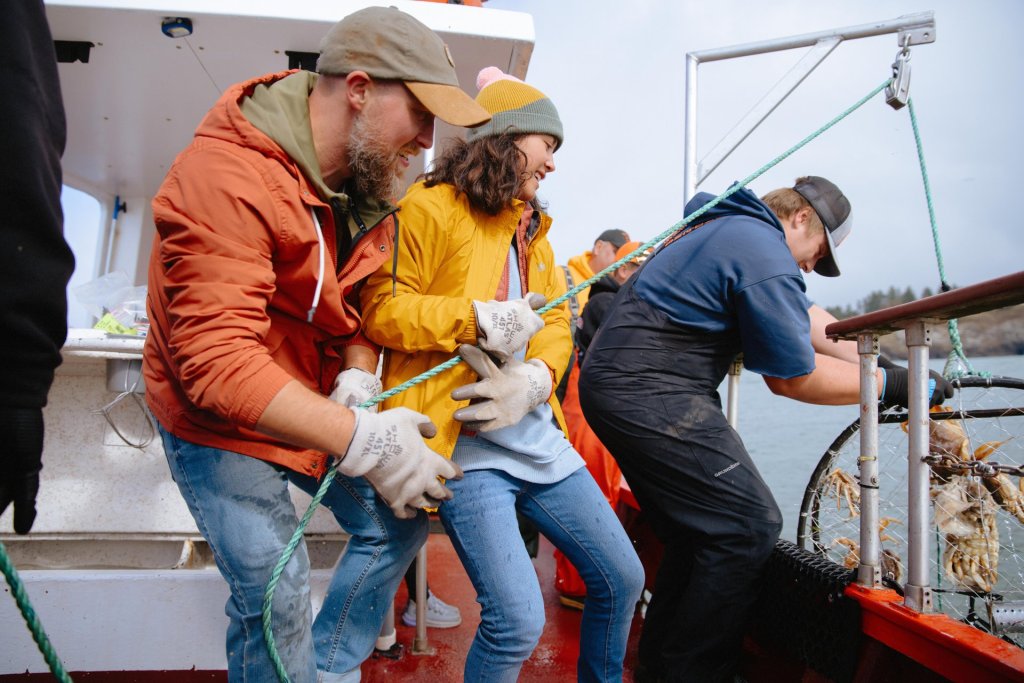
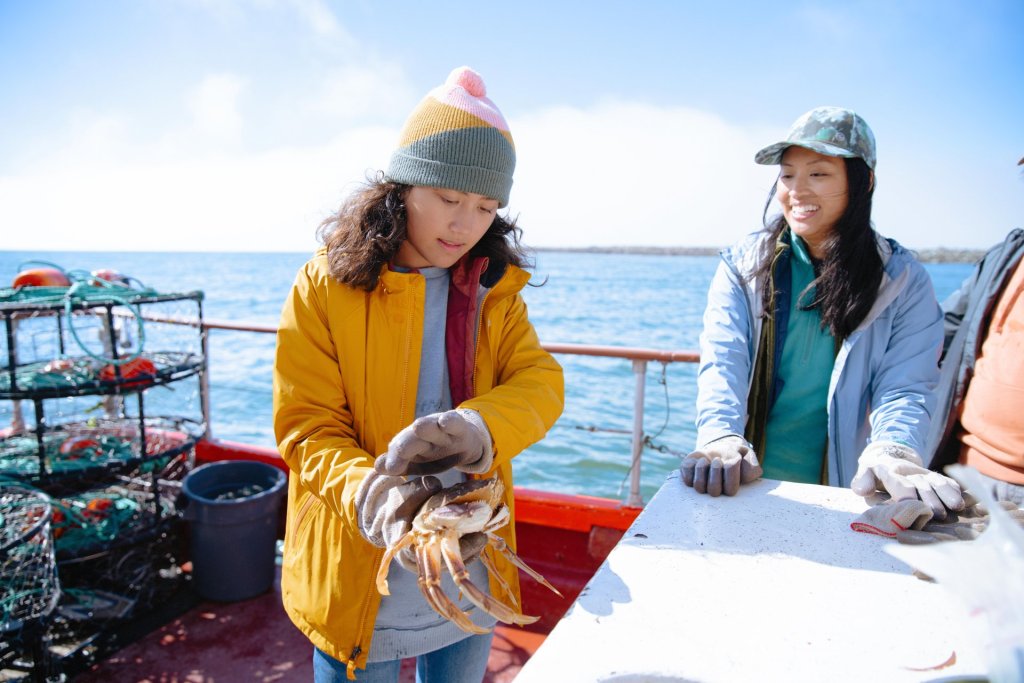
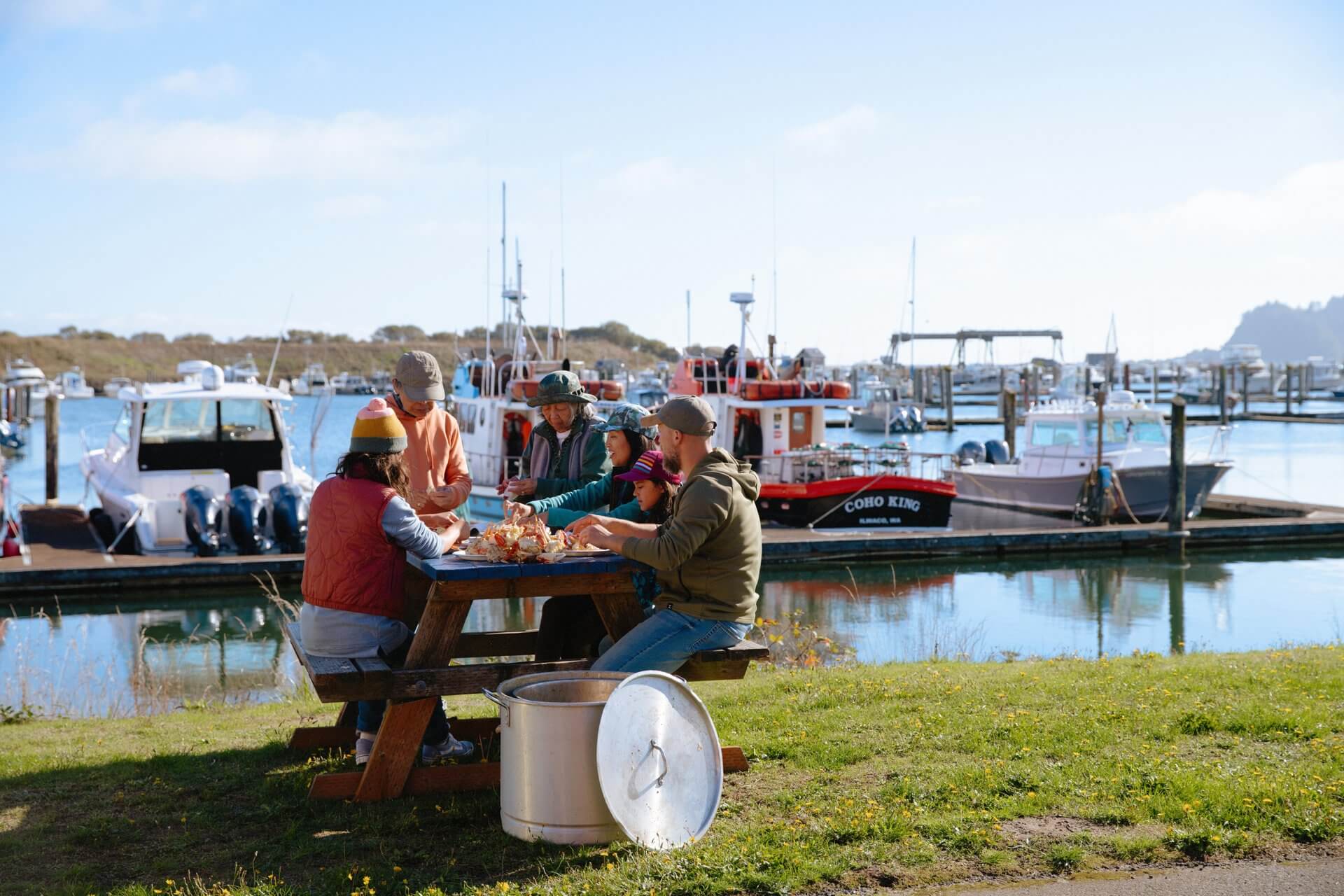
The tender, sweet meat of this prized Pacific Northwest delicacy is harvested from boats, piers, and beaches using crab pots or ring nets. Along the Pacific Coast, rent gear from Seafood Connections, a floating seafood market in the Westport Marina, and set up your traps right off the pier.
Those with boats can head to tiny Jetty Island off the shore of Everett, where the west side of the island is prime Dungeness crab habitat. At the mouth of the Columbia River, Ilwaco offers boat crabbing and shore crabbing. Shoreline crabbers can scour the shallow flats at Birch Bay in northern Puget Sound.
For guided crabbing, let Waters West Guide Service take care of the logistics for trips in Willapa Bay, Grays Harbor, and along the Columbia River. Alternatively, Hood Canal Adventures in Hoodsport rents kayaks and kayak-specific crabbing gear for a DIY trip. In October, Port Angeles on the Olympic Peninsula hosts the Dungeness Crab Festival, featuring a chowder-off, chef demonstrations, crab dinners, live music, and more.
Seasons, Licenses, and Regulations:
- Recreational crabbing in Puget Sound has two seasons: summer (July and August, typically Thursdays through Mondays or Sunday-Monday, depending on the area) and winter (roughly October through December).
- Although crabbing is open year-round on the coast and the Columbia River, pot gear crabbing is generally limited to nine to 10 months a year, closing for a portion of fall.
- Puget Sound Dungeness crab requires a catch record card and Puget Sound crab endorsement card in addition to the standard shellfish/seaweed, combination, or saltwater fishing license.
- Check beach status at WDFW with DOH before going.
- Always use biodegradable escape cord on traps and follow other best practices to ensure you don’t lose your gear.
- A person is allowed six male Dungeness crabs with a minimum 6.25-inch carapace in Puget Sound, and up to 12 males at least 6 inches on the coast and the Columbia River.
Clams
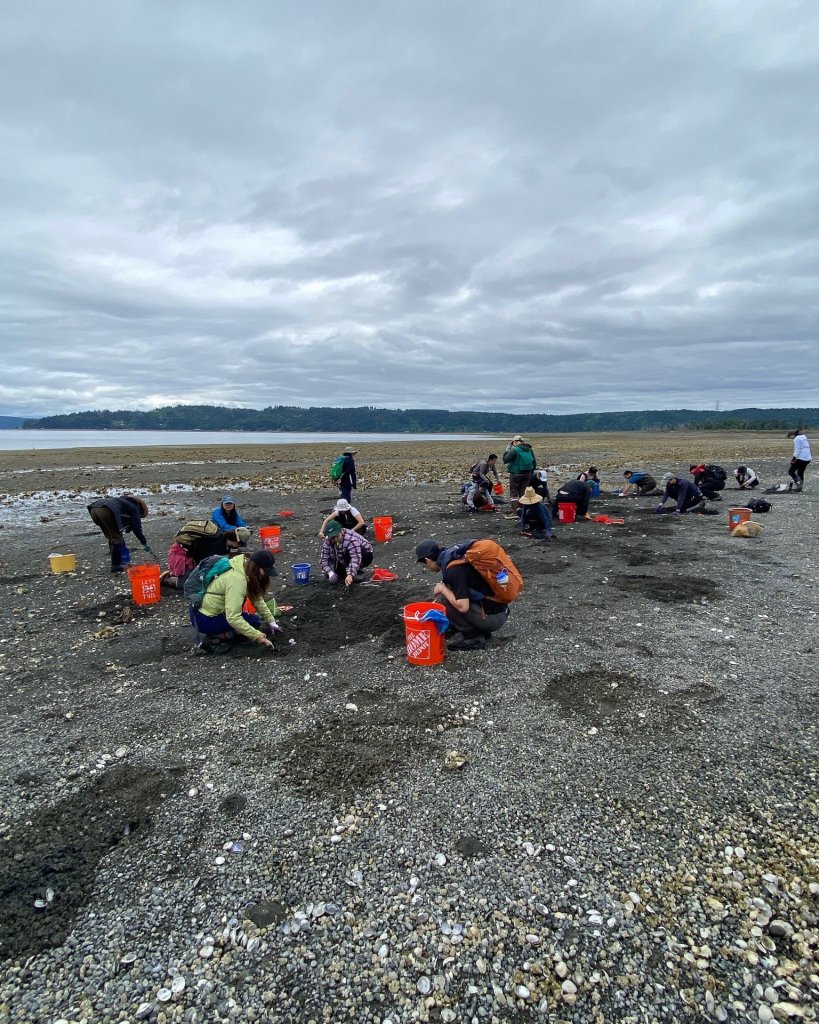
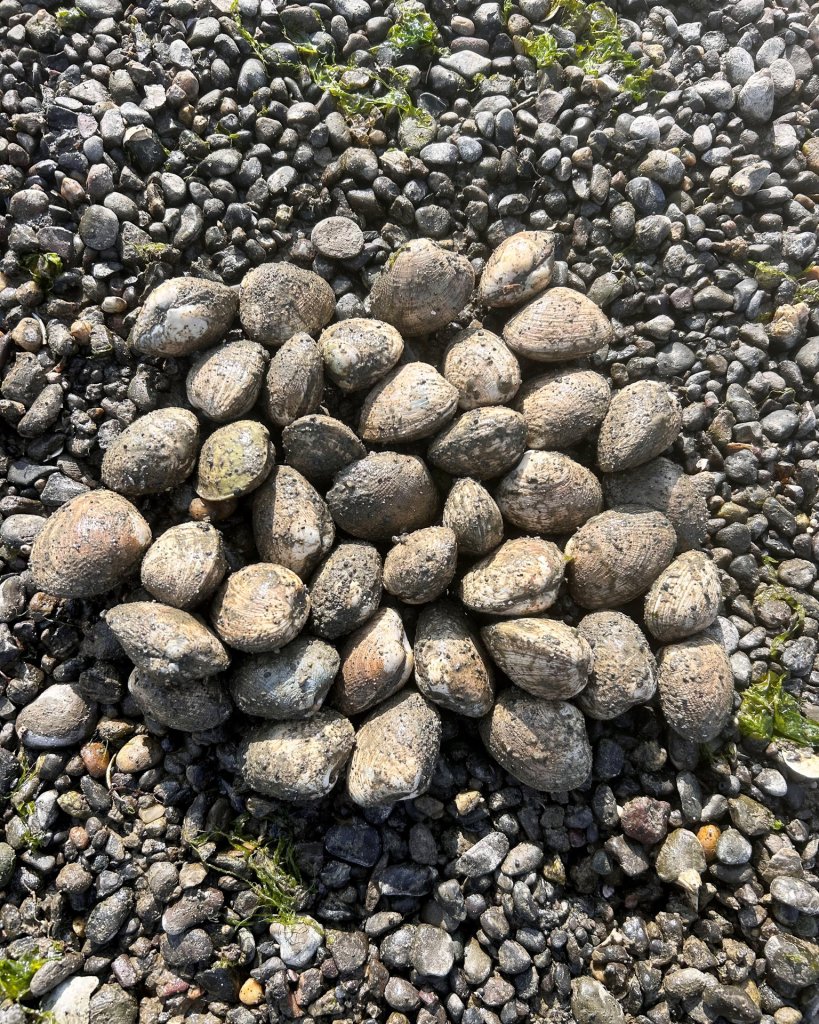
Dedicated clammers often trek out at low tide in the wee hours of the morning with headlamps and rubber boots to dig up tasty razor clams, butter clams, littlenecks, manila clams, and more. Razor clams—quick-digging icons heralded for their meaty, delicious flavor—inhabit the intertidal zones in sections of the Pacific Coast and draw visitors looking to easily experience shellfish harvesting in Washington.
To the south, the Long Beach Peninsula on Washington’s Evergreen Coast is a great family-friendly clamming spot with expansive, sandy shoreline. Each April, the Long Beach Razor Clam Festival celebrates the mollusk with a clam chowder taste-off, digging lessons, and live music. Farther north, Westport draws clammers to the section of beach between Twin Harbors and the south jetty.
On Hood Canal in the Puget Sound, Potlatch State Park is home to a cornucopia of clams and is one of the best places to harvest shellfish in Washington. Different sections will yield Manila, native littleneck, butter, varnish, and eastern softshell clams. Some clammers even aim their sights on the large and elusive geoduck (pronounced gooey-duck), with many having success at Penrose State Park.
Seasons, licenses, and regulations:
- Razor clam season typically opens for select dates from October through April. WDFW schedules specific dig days. The harvest season for other clams varies.
- Before clamming, check the domoic acid levels at your desired location. These algae toxins can accumulate and be harmful to humans, even if clams are cooked.
- Check beach status at WDFW with DOH before going.
- A razor-clam, combination fishing, or shellfish/seaweed license is required.
- There’s a 15 razor clam limit per person. The limit for other species is 40 per person, plus seven horse clams and three geoducks.
- Ensure your clam harvest meets minimum size requirements, which vary by species.
- You must keep your first 15 razor clams, even if dead or broken.
- Fill clamming holes after harvesting and replace undersized or discarded clams back into the holes.
- Harvest clams during low tides.
- Learn more about harvesting different varieties of clams via WDFW.
Also See: Family Fun on the Long Beach Peninsula
Mussels
On many clamming beaches, mussels can often be found clinging to nearby rocks or other firm surfaces in intertidal zones. Whidbey Island is known for excellent harvesting, with the mussel beds of Penn Cove delivering some of the most delectable mussels. Stay at the tranquil Captain Whidbey for views of the cove and beach access. Harvest mussels for yourself at West Penn Cove, or join other mussel lovers in Coupeville for the Penn Cove Musselfest in March. The event features a mussel-eating contest, chowder competition, chef demonstrations, and more.
Seasons, Licenses, and Regulations:
- West Penn Cove is open year-round, but specific beaches have individual harvesting seasons.
- October through March or April is generally a good time to harvest mussels. Warmer months have a higher risk of biotoxins.
- Check beach status at WDFW with DOH before going.
- Plan your harvesting around low tide and avoid marinas, harbors, and urban beaches.
- A combination fishing or shellfish/seaweed license is required.
- The limit is 10 pounds per person per day, with no size requirements.
Safe and Sustainable Shellfish Harvesting in Washington
The Department of Health (DOH) regularly tests Washington’s waters to make sure shellfish are safe for consumption. View their shellfish safety map. The Washington Department of Fish and Wildlife also opens and closes beaches to ensure shellfish harvesting in Washington is sustainable. Please follow their safety and sustainability best practices for harvesting shellfish in Washington waters.
Note: Some tidelands in Puget Sound, Hood Canal, Grays Harbor, and Willapa Bay are privately owned, and shellfish and seaweed may not be taken without permission. Native American tribes also reserve treaty rights to harvest shellfish in many areas. Check to make sure you are harvesting legally before diving in.
About the Author
Ellee Thalheimer is a freelance writer and guidebook author based in the Pacific Northwest who has contributed to publications like Lonely Planet Guidebooks, Alaska Airlines Magazine, and Adventure Cyclist Magazine. When she can’t get outside, she writes fiction, drinks local IPAs, and perfects her handstands.
